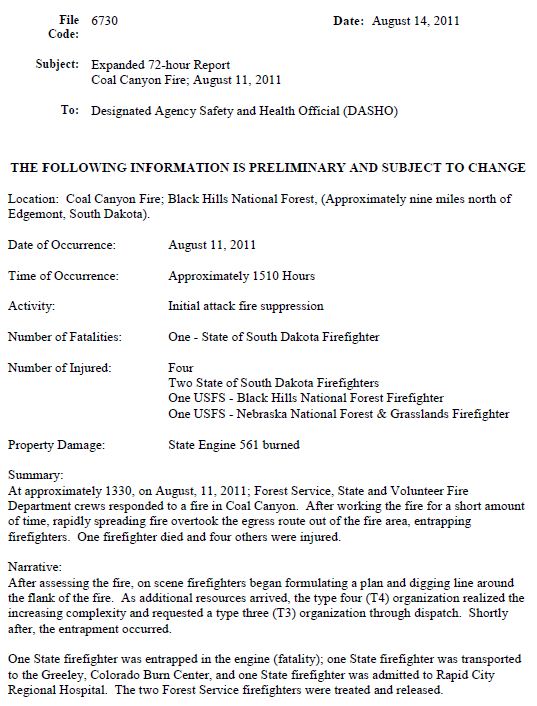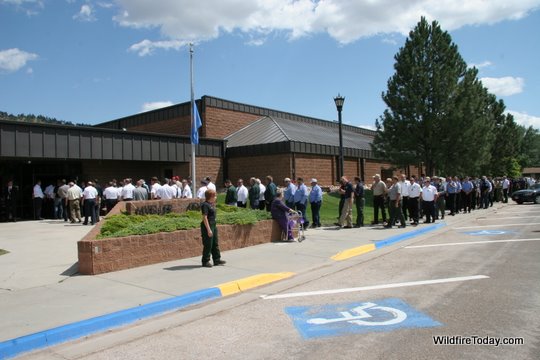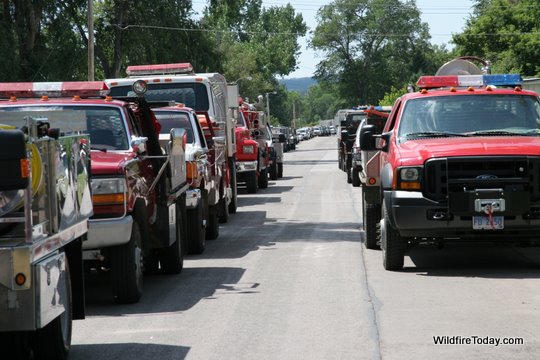On a day when a reporter said the winds were so strong that he had trouble standing, there were many large fires in central and eastern South Dakota. Twice on October 5, engines were burned over, causing, thankfully, what sound like non-serious burns for the firefighters, but the total loss of the two engines.
Jim Strain, the Chief of Operations for the South Dakota Division of Wildland Fire Suppression, provides the details:
==============================
“On Wednesday, October 5th, I was working on a 17,500 acre prairie fire in south central South Dakota when I received a report of an engine burn over involving a rural VFD engine and crew on another wildfire 30 miles north of my location. That VFD engine and crew were assisting the BIA on a 5000 acre wildfire. Reports are that a firefighter was trying to restart the pump on the back of the apparatus when the fire started to entrap him. He ran from the engine and suffered burns on the face , scalp and hands. He was later hospitalized that evening and released the next morning. The engine was a total loss.
The second burn over occurred that same afternoon on an 11,000 acre wildfire in eastern South Dakota just south of the North Dakota and South Dakota state line. The Type 6 engine crew on a rural VFD engine was attempting to cut a barbed-wire fence to gain access to a fire area, when the fire circled back and entrapped them, causing them to run to their safety zone. The two firefighters suffered minor burns to their necks and faces, but the engine was a total loss. The engine boss on this engine has over 30 years of experience suppressing wildfires.
We are still trying to gather facts on both situations, but it seems rather apparent that the abundant spring and summer rainfall throughout Eastern Montana and the Dakotas has contributed to above average grass fuel loadings in the area. Coupling that with the normal seasonal fall dryness and warm, windy conditions, create a situation where above normal radiant heat transfer and extreme rates of spread are seen in these grass fuels models. What is deceiving is that in all of our fires this week, fire spread will slow in the green draw bottoms ( or coulees for those of you that speak Eastern Montanan ) and move quickly upslope in the dryer cured fuel beds on the ridge tops. None of this comes as a surprise, but it can happen so fast that firefighters think they are safe one moment and trapped the next. As we move into October, we can expect more of the same on days where the fire danger is high, very high or extreme in our grass fuel models.
We are very grateful that just minor injuries occurred to the firefighters, but it could have been worse. But this serves a reminder to maintain that situational awareness on any grass fire, especially under the conditions that we seeing this fall fire season.”
=============================
UPDATE October 13, 2011: there was a third burnover that day.









